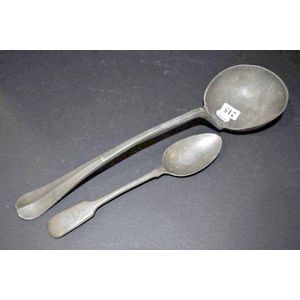Qing Dynasty Jade Ruyi with Carved Panels and Rosewood Sceptre
Large Chinese Qing Dynasty jade ruyi, set with three beautiful carved white jade panels displaying peaches, flowers and pomegranate, united by rosewood sceptre, length 54 cm. Provenance: Dr. Merna Marie Torrington collection
You must be a subscriber, and be logged in to view price and dealer details.
Subscribe Now to view actual auction price for this item
When you subscribe, you have the option of setting the currency in which to display prices to $Au, $US, $NZ or Stg.
This item has been sold, and the description, image and price are for reference purposes only.
- Qing Dynasty - The Qing Dynasty was the last imperial dynasty of China, ruling from 1644 to 1912. It was established by the Manchu people, who originated from the northeastern region of China. The Qing Dynasty was preceded by the Ming Dynasty and followed by the Republic of China.
- Ming Dynasty - The Ming Dynasty was a ruling dynasty of China from 1368 to 1644. It succeeded the Yuan Dynasty and preceded the Qing Dynasty. The Ming Dynasty was established by Zhu Yuanzhang, a former Buddhist monk who became a rebel leader and eventually overthrew the Mongol Yuan Dynasty. During the Ming Dynasty, China experienced a period of relative stability and prosperity. The government was centralized and bureaucratic, with the emperor at the top of the hierarchy. The Ming Dynasty is known for its cultural achievements, including the development of porcelain, the invention of movable type printing, and the construction of the Great Wall of China.
- Rosewood - A dense timber that varies in shade to very light brown to almost black. When rosewood is cut and sanded the colour of the timber will turn black, and after polishing and exposure to daylight, the surface will gradually lighten over time to light brown with black streaks.
The name comes from the odour emanating from the timber when it is planed, sanded or cut.
Rosewood was very popular for use in Victorian furniture in the second half of the 19th century, and at that time most of the rosewood was imported from Brazil. However it also grows in India and Indonesia.
It is used in the sold for chairs and table legs, but for carcase furniture such as side cabinets and bookcases, and for table tops it is always used as a veneer.
This item has been included into following indexes:
Visually similar items

Paul Storr: sterling silver spoon, London c1812.
Sold by
in
for
You can display prices in $Au, $US, $NZ or Stg.

Pewter large ladle (engraved and dated 1808) together with fiddle pattern spoon
Sold by
in
for
You can display prices in $Au, $US, $NZ or Stg.

Sterling silver Old English patterned basting spoon. London 1808. George III
Sold by
in
for
You can display prices in $Au, $US, $NZ or Stg.

Antique sterling silver child's tea spoon with gilded bowl, late 17th century
Sold by
in
for
You can display prices in $Au, $US, $NZ or Stg.
